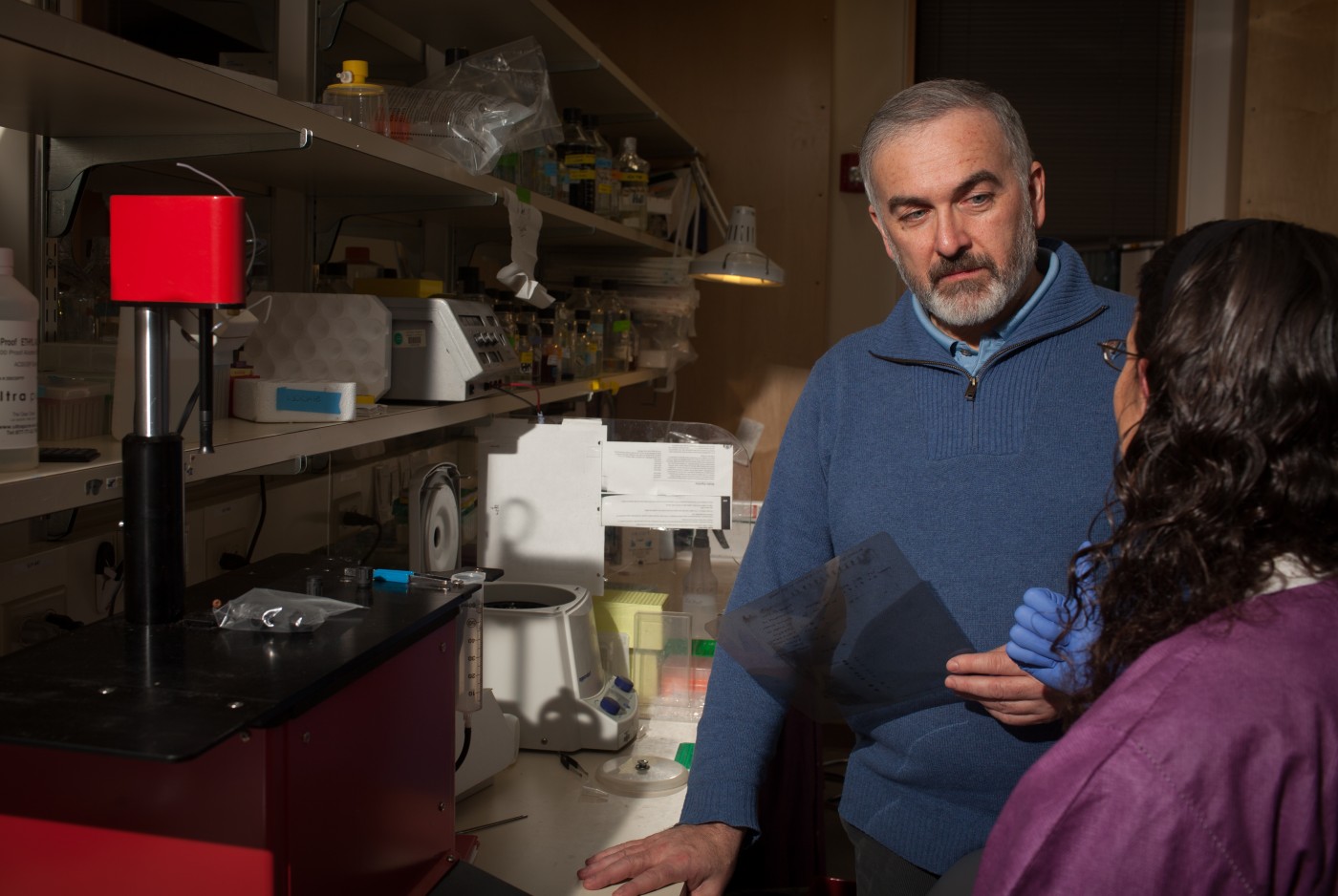EXCLUSIVE: New Insight Into SMA from Dr. Adrian Krainer

 In an exclusive interview, SMA News Today Senior Columnist Maureen Newman spoke with Dr. Adrian Krainer of Cold Spring Harbor Laboratory. In conjunction with Isis Pharmaceuticals, Dr. Krainer and his team are making promising strides into better understanding how SMA works.
In an exclusive interview, SMA News Today Senior Columnist Maureen Newman spoke with Dr. Adrian Krainer of Cold Spring Harbor Laboratory. In conjunction with Isis Pharmaceuticals, Dr. Krainer and his team are making promising strides into better understanding how SMA works.
In January, Dr. Adrian Krainer of Cold Spring Harbor Laboratory made news for “Challenging the Assumptions for Effective SMA Drug Administration,” as reported by SMA News Today. Working with the drug ASO-10-27, which is an antisense oligonucleotide (ASO) that Isis Pharmaceuticals is testing in clinical trials, Dr. Krainer and his research team delivered treatment subcutaneously to mice in conjunction with intracerebroventricular (ICV) administration of another oligonucleotide that neutralizes ASO-10-27. The team found it was essential to restore survival motor neuron-2 (SMN2) in peripheral tissues, but not in the central nervous system.
“Prior to this paper, we published a paper in 2011 that showed subcutaneous injection of ASO-10-27 had a dramatic effect on survival, much stronger than ICV administration,” said Dr. Krainer, in an exclusive interview with SMA News Today. “With only subcutaneous injection in neonate mice, we saw some splicing correction in the brain and spinal cord, as well as in the periphery, but not a lot. Why was the phenotypic effect stronger than the effect from direct administration?”
Evidently, splicing of SMN2 in tissues outside the central nervous system (CNS) was necessary for helping the CNS. It was possible that splicing in the CNS was necessary but not sufficient for the effect, or that it was not necessary, though Dr. Krainer and his research team could not distinguish between these two possibilities. Thus, the team needed to cancel out the effect of ASO-10-27 in the CNS, which they achieved by using a decoy oligonucleotide. “Outside the CNS turned out to be sufficient. Within was not necessary,” concluded Dr. Krainer.
[adrotate group=”3″]
Working off of the results published in 2011, the team was met with a few hurdles to overcome. “When we designed the experiments, we did not know how well the decoy could work,” recalled Dr. Krainer. “We measured decoy efficacy through assays for splicing in several different tissues. The results were compelling and clear, although it took us a long time to collect all the data because many of the treated mice survive longer than one year. The decoy in the CNS was very effective at canceling out [ASO-10-27] in a local manner.”
The most difficult aspect of the team’s work is the lack of an obvious explanation for why the drug is acting in the periphery. “Is it working in this or that cell type?” asked Dr. Krainer, exemplifying the unknowns. “One possibility is that the ASO, when administered in the CNS, rescues motor neurons by fixing their SMN2 expression. Another is that it rescues SMN2 expression in cells that in turn support motor neurons.” This may be why combined treatment, where both subcutaneous and ICV administration are used, appears to be the most effective treatment strategy in the mice used so far.
In the paper, Dr. Krainer acknowledged the “mouse” aspect of their work. “A word of caution is that it is hard to know to what extent the observations made in mouse models apply to patients,” he said. “It would require clinical trials to determine. It is possible that clinical trials would show different effects from those observed in mouse models.” Although a new large animal model of SMA was recently developed using shRNA in pigs, Dr. Krainer believes the logical direction to take these subcutaneous results would be to test them in new clinical trials, possibly after the current trials with ASO-10-27 are completed. Perhaps the same ASO, or a combination of a new ASO with optimal properties for subcutaneous administration and ASO-10-27, would be used during these studies to see if there is an additional benefit.
“I think it is too early to tell if that is going to be more effective,” said Dr. Krainer. “Treatment has already shown to be safe through lumbar puncture, and the trials are now focused on determining efficacy. The same drug or perhaps a similar drug can be given subcutaneously to patients, but this must first be tested for safety in mice and non-human primates, because it is a different way of giving the drug.”
Clinical results concerning efficacy to this point have shown indications of increased SMN gene expression and protein in the spinal cord. The ASO is able to fix SMN2 expression in the CNS. It is hoped that statistically significant improvements in overall motor function and health will be seen in patients. The team expects that early intervention will be most beneficial.
These achievements are a result of the long-term collaboration between Dr. Krainer’s laboratory and Isis Pharmaceuticals. In the history of their relationship, they have published several articles together, with Isis manufacturing and providing the original oligonucleotides for Dr. Krainer’s laboratory to screen and test in cells and in mouse models of SMA. “At some point, when things looked promising, they carried out extensive primate and pharmacology (biodistribution, stability, and toxicity) studies and submitted an application for clinical trials to the FDA,” said Dr. Krainer. “We continue to collaborate on understanding the mechanisms behind treatment. Some experiments are conducted here, others are conducted there. We exchange a lot of material and work very closely together.”
Preceding the current era of oligonucleotide treatment for SMA, Dr. Krainer personally researched RNA splicing mechanisms starting 30 years ago. At a National Institutes of Health SMA workshop in 1999, Dr. Krainer heard about SMA for the first time. “First, I wanted to understand the mechanistic basis for defective splicing in SMN2 and in other genes that we were already studying,” recalled Dr. Krainer. “After developing a method to correct these defects in the test tube, we published a paper and a patent application. That is when Isis contacted us, and we then worked together to perfect the method in various ways.” Effectively, Dr. Krainer and his collaborators developed an effective way of correcting certain splicing defects. He continues to further develop the method, which can be applied to diseases other than SMA, including other genetic diseases and cancer associated with abnormal splicing of various genes.
“Generally, we’re excited by the progress the SMA field has made,” stated Dr. Krainer. “There are multiple therapeutic approaches that are currently being tested. We have a better understanding of disease and therapy. There is still a lot of work to be done to understand how SMA pathology results from low levels of SMN, and to develop optimal therapy for the different types of SMA.
“With several clinical trials going on now, I think it is extremely promising,” he continued. “SMA is an excellent example of precision medicine and targeted therapy. We are all very grateful to patients and their families for being so willing to participate in clinical trials and to support basic research.”







